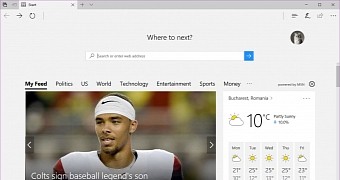Windows 10 Redstone 3 is scheduled to launch in September, and just like the Creators Update, it’s expected to introduce a bunch of new major features on PCs (the future of mobile is still uncertain right now, and there are rumors that focus on smartphones could drop completely until the fall).
One of these features appears to be aimed at Microsoft Edge, as according to a new report, the software giant wants to start delivering updates for the browser through the Windows Store.
Why is this so important? First and foremost, Microsoft Edge is currently updated only when new OS releases are getting the go-ahead. This means twice every year, as per Microsoft’s Windows 10 update schedule, as the operating system is now receiving major updates in March and September.
More frequent updates
Already used in the past, when Edge received extension support in the Anniversary Update and tab improvements, more Flash controls, and a bunch of other features in the Creators Update, this strategy is keeping Microsoft’s new browser behind rivals, which are getting updates at a much faster pace, in most of the cases monthly or even more frequently.
With Windows 10 Redstone 3, all of this could finally change as Microsoft wants to deliver updates for Edge through the Windows Store, so users won’t have to wait until a new OS version goes live to get these improvements.
This is possible because Edge itself is developed as a universal app, so shipping updates can be done through the Store more often if needed. Most likely, Microsoft will adopt a strategy similar to other apps like Office and Groove Music, with improvements first shipped to insiders and then to users in the production ring when testing is complete.
More information could be provided by Microsoft at the Build developer conference this month, but there’s no doubt this is the better strategy, especially because Edge is still trailing behind its rivals in terms of features.
Third-party data puts Google Chrome on the first spot with nearly 60 percent market share on the desktop, while Edge is far behind with just 5 percent.

 14 DAY TRIAL //
14 DAY TRIAL //